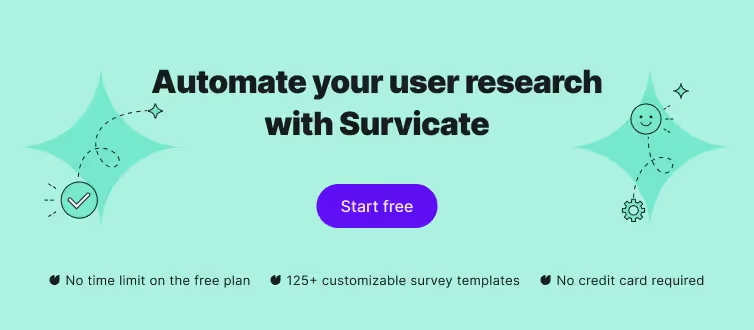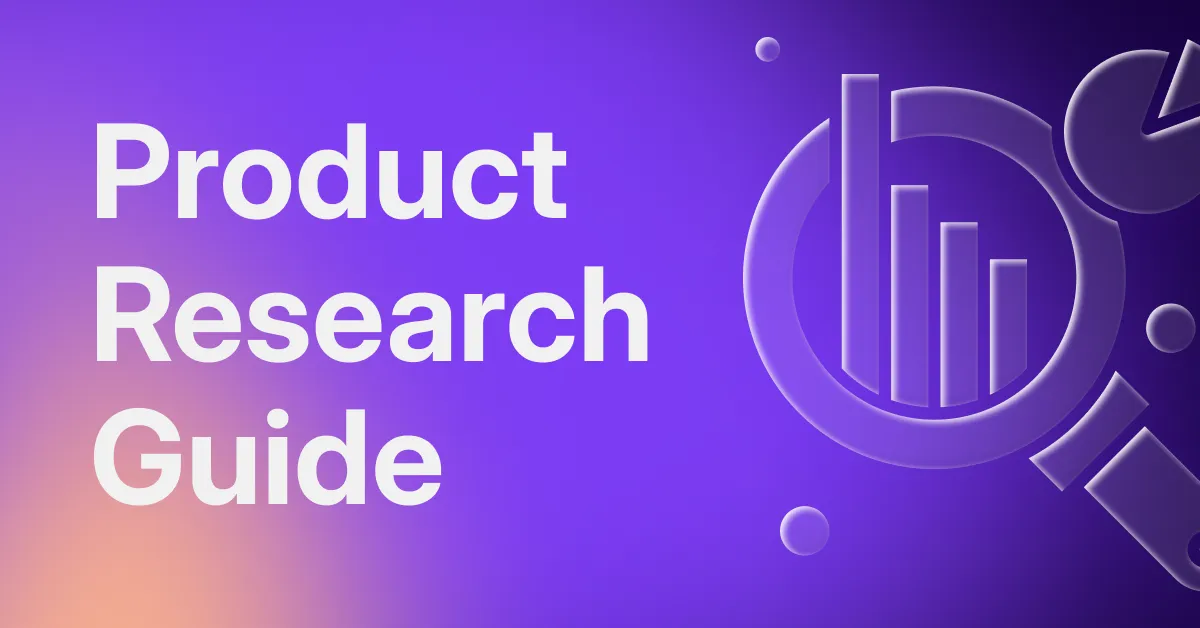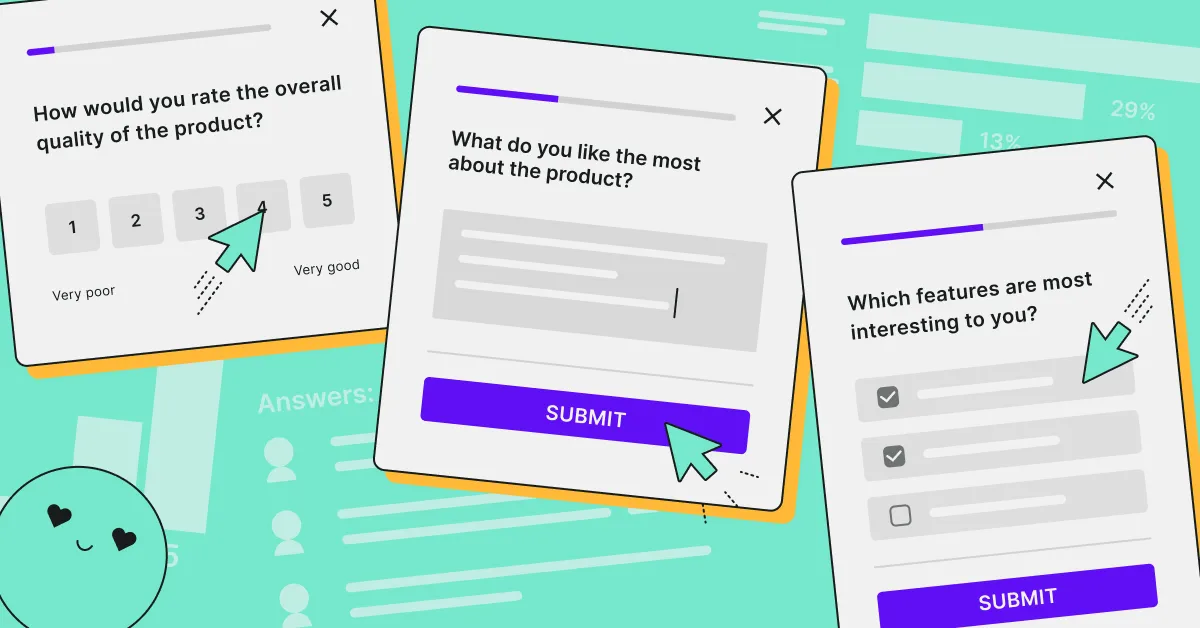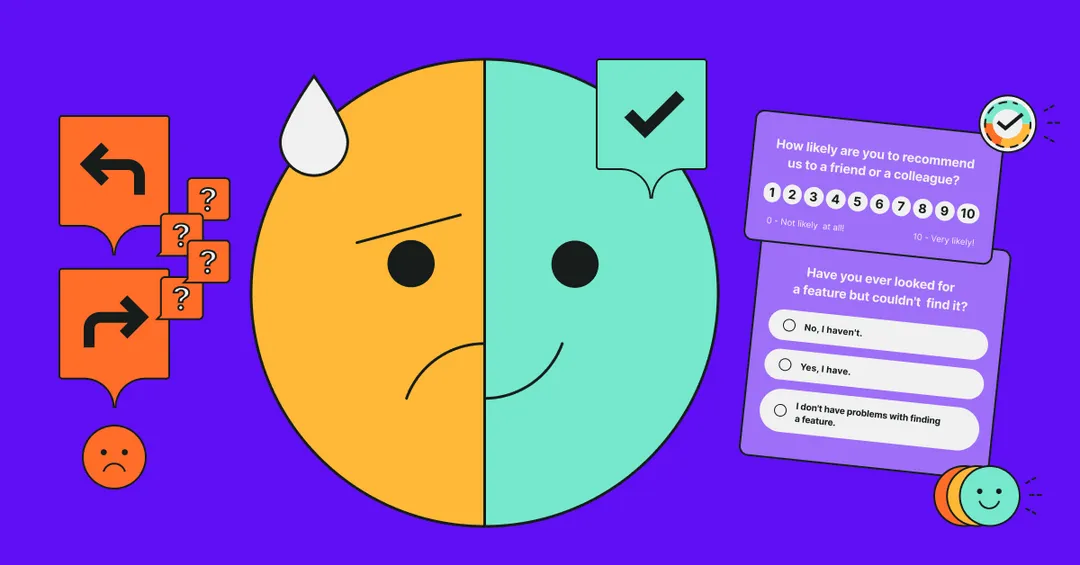By now, you must be aware that thorough UX research is the foundation of exceptional digital experiences. But how do you ensure your research provides the user data you need?
The answer lies in adopting the best research practices. Whether you're working on a website, mobile app, or any other digital product, these guidelines are universally applicable and adaptable to various design contexts.
In this blog post, we’ve compiled the top 5 UX research best practices that will empower you to create seamless experiences and differentiate your product in a competitive landscape.

1. Clearly define research objectives
Clear research objectives serve as a compass, guiding researchers in their pursuit of understanding user needs and behaviors. Without well-defined objectives, research efforts may lack focus, leading to scattered data collection, vague findings, and ultimately, ineffective design outcomes.
Clear objectives help researchers stay on track, ensuring that the research process remains purposeful and aligned with the overall goals of the project.
Moreover, they also play a crucial role in fostering collaboration among stakeholders and promoting a user-centric approach to design and development.
How to craft effective research objectives
Crafting effective research objectives requires careful consideration and thoughtful planning. Here are some practical tips to help you define clear and meaningful objectives in your UX research.
Start with the problem statement
Begin by clearly articulating the problem or challenge you aim to address through your research. This problem statement will serve as the foundation for your research objectives. For example, if you're designing a mobile app and notice a high bounce rate, your problem statement could be: "Understand the reasons for the high bounce rate on the app's landing page."
Make objectives specific and measurable
Research objectives should be specific enough to provide clear direction and measurable to gauge success. Vague objectives such as "Understand user behavior" lack specificity and make it challenging to assess the achievement of the research goal. Instead, consider specific and tangible objectives such as "Identify the key usability issues that cause users to abandon the checkout process."
You can collect data to support this objective by using the card abandonment survey template below:
Consider different research dimensions
When defining objectives, consider the different dimensions of UX research. This includes behavioral, attitudinal, and demographic dimensions. For instance, if you're conducting user research for an e-commerce website, your objectives may encompass aspects such as usability (behavioral), satisfaction (attitudinal), and target audience preferences (demographic).
Align objectives with research methods
Align your research objectives with the appropriate research methods for best results. Different methods, such as interviews, surveys, or usability testing, provide unique insights and data. For example, if your objective is to understand users' mental models and thought processes, conducting in-depth interviews or usability testing may be more appropriate than a survey
Prioritize objectives
In situations where you have multiple research objectives, prioritize them based on their significance and impact on the design process. This helps you allocate resources effectively and ensures that the most critical objectives receive adequate attention.
2. Use a variety of research methods
Using multiple UX research methods yields several advantages that contribute to a holistic understanding of users and their experiences.
Each research method provides different types of data. For example, interviews offer qualitative insights into users' thoughts and feelings, while surveys provide quantitative data on preferences and behaviors.
When different research methods converge on similar findings, it strengthens the validity and reliability of the insights. Triangulation allows researchers to cross-validate data from multiple sources, reducing the risk of bias and increasing confidence in research outcomes.
Having a repertoire of methods at your disposal allows for flexibility in adapting to specific research goals and constraints and enables you to tailor your approach to address unique project requirements.
Here are some guidelines to help you select and combine research methods effectively:
- clearly define your research goals and questions and identify the specific insights you seek to obtain before you start thinking about the methods you will use;
- assess the strengths and limitations of different research methods and select the ones that align with your research goals, considering factors such as the depth of insights required, time and budget constraints, the type of data you need (for instance, qualitative or quantitative), and the level of interaction with participants;
- look for opportunities to combine methods that complement each other to gain a more nuanced understanding of user experiences;
- decide whether you will employ methods sequentially or concurrently. Sequential methods involve conducting one research method followed by another, building upon the insights gained in each phase. Concurrent methods involve running multiple methods simultaneously to capture different aspects of the user experience.
Surveys, including the Net Promoter Score template below, provide a structured and systematic approach to gathering quantitative data on your users’ experience with your product or service:
3. Recruit diverse and representative participants
When you focus on diversity when recruiting research participants, you’re more likely to capture a broader range of perspectives, experiences, and behaviors.
By making sure your user research is inclusive, you go beyond recognizing and accepting diversity and intentionally seek to incorporate it into the research design.
Designing for a homogeneous user group can lead to biased assumptions and stereotypes that overlook the needs of underrepresented user segments. Recruiting diverse participants helps challenge these biases, ensuring the final product accommodates a wide range of users.
It can also help you uncover patterns and insights that may have otherwise remained hidden. Different cultural, social, and demographic factors influence users' behaviors and expectations, and by including diverse participants, researchers can uncover these nuances and design with a more inclusive approach.
4. Document and analyze findings systematically
Systematic documentation and analysis of research findings are essential to make the most of your research. At the end of the day, what’s the point of investing in research activities if you don’t document the outcomes or draw conclusions from them? Here are some of the main benefits you can expect when you stick to this recommendation.
Accuracy and accountability
Systematic documentation ensures that your research findings are accurately recorded and can be referenced reliably. By documenting research activities, methodologies, and findings, you will establish an accountable process and build trust in the validity and reliability of their research outcomes. This means you’ll also be comfortable sharing the results with any of your stakeholders, including company management and investors.
Retention of knowledge
Research projects often involve multiple team members, and systematic documentation helps retain knowledge and insights generated throughout the research process. Documenting findings also ensures that knowledge is not lost when team members change or as the project progresses, helping you to maintain continuous learning and build upon your previous research.
Collaboration and communication
Systematic documentation helps you maintain excellent collaboration and communication among team members, stakeholders, and clients. Clear and well-organized documentation makes it easy to share insights, enables others to understand and validate research findings, and ensures everyone stays on the same page.
Future reference and iteration
Lastly, documentation serves as a valuable resource for future reference and iterative design. If you document your research findings and insights systematically, you’ll be able to use them to inform future design decisions, track changes in user needs, and evaluate the impact of design iterations over time.
5. Iterate and incorporate user feedback
Iterative design acknowledges that creating optimal user experiences is an ongoing process. Through iteration, you can refine and enhance your designs by testing and observing how users interact with the product.
Iterative design minimizes the risk of developing a product that fails to meet user expectations. By testing and iterating on designs early and often, you can identify and address potential issues before they become significant problems, saving time and resources.
While user feedback is undeniably invaluable, you need to balance it with the overall design vision. The data you’ll gather during your research will provide insights into user needs and preferences, but you should also consider your designers’ own expertise and design principles.

Collect user insights at scale with Survicate
Incorporating the UX research best practices we discussed in this blog post will undoubtedly help you make sure you deliver user-centric designs that resonate with your target audience.
Surveys are one of the key research methods that form an integral part of UX research. They allow you to measure user satisfaction, understand user preferences, and collect valuable insights at scale and in a cost-effective way.
Survicate is a powerful and user-friendly survey tool that provides an array of features specifically designed for UX research. Its intuitive interface, a robust survey builder, and customizable templates make it easy to create engaging surveys that yield actionable insights. With Survicate, you can seamlessly collect feedback, measure user sentiment, and gain a deep understanding of your users' needs and expectations.
Now you can collect user feedback at every stage of the user journey for free with Survicate’s Flexible plan. Simply sign up and enjoy unparalleled user insights!













.webp)
.webp)
.svg)

.svg)



